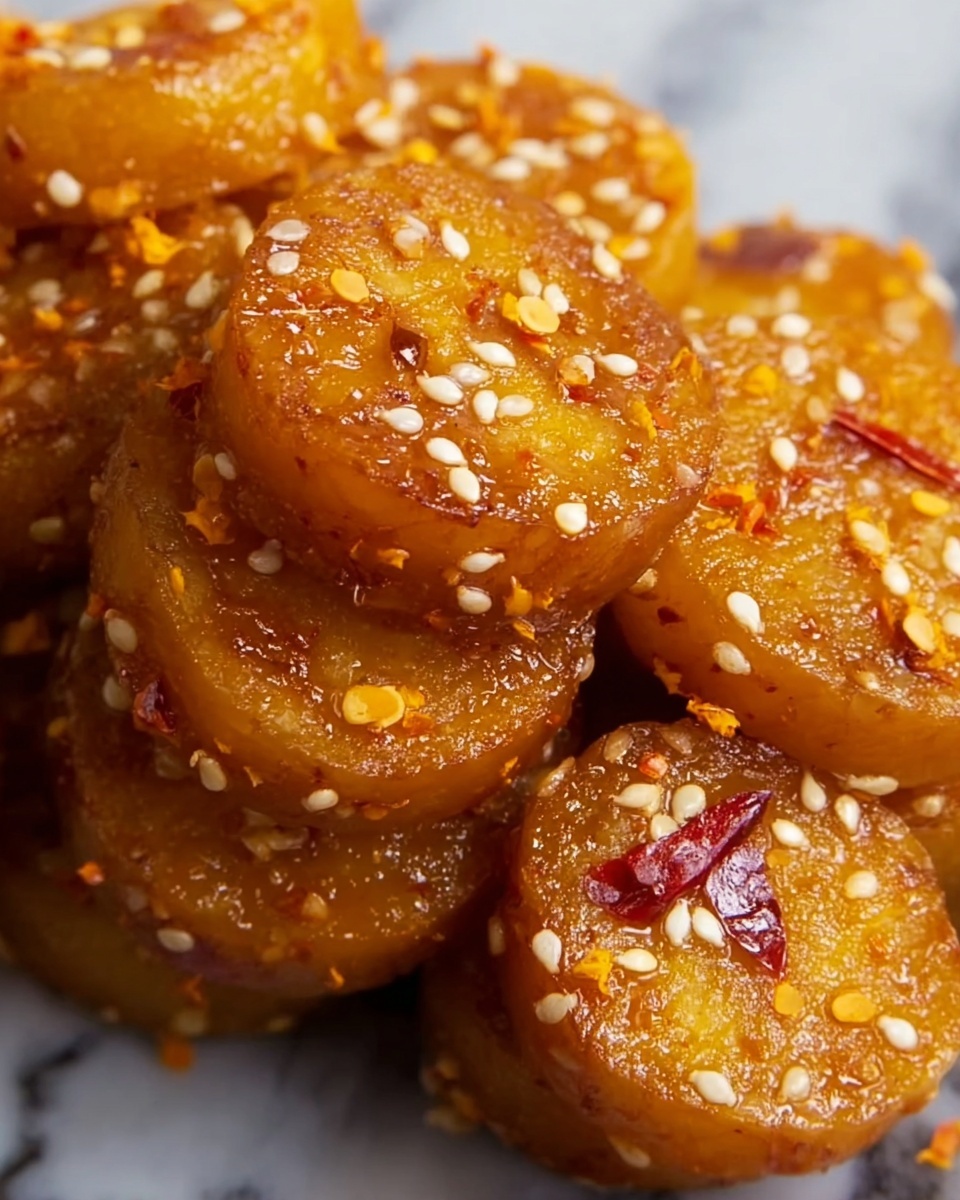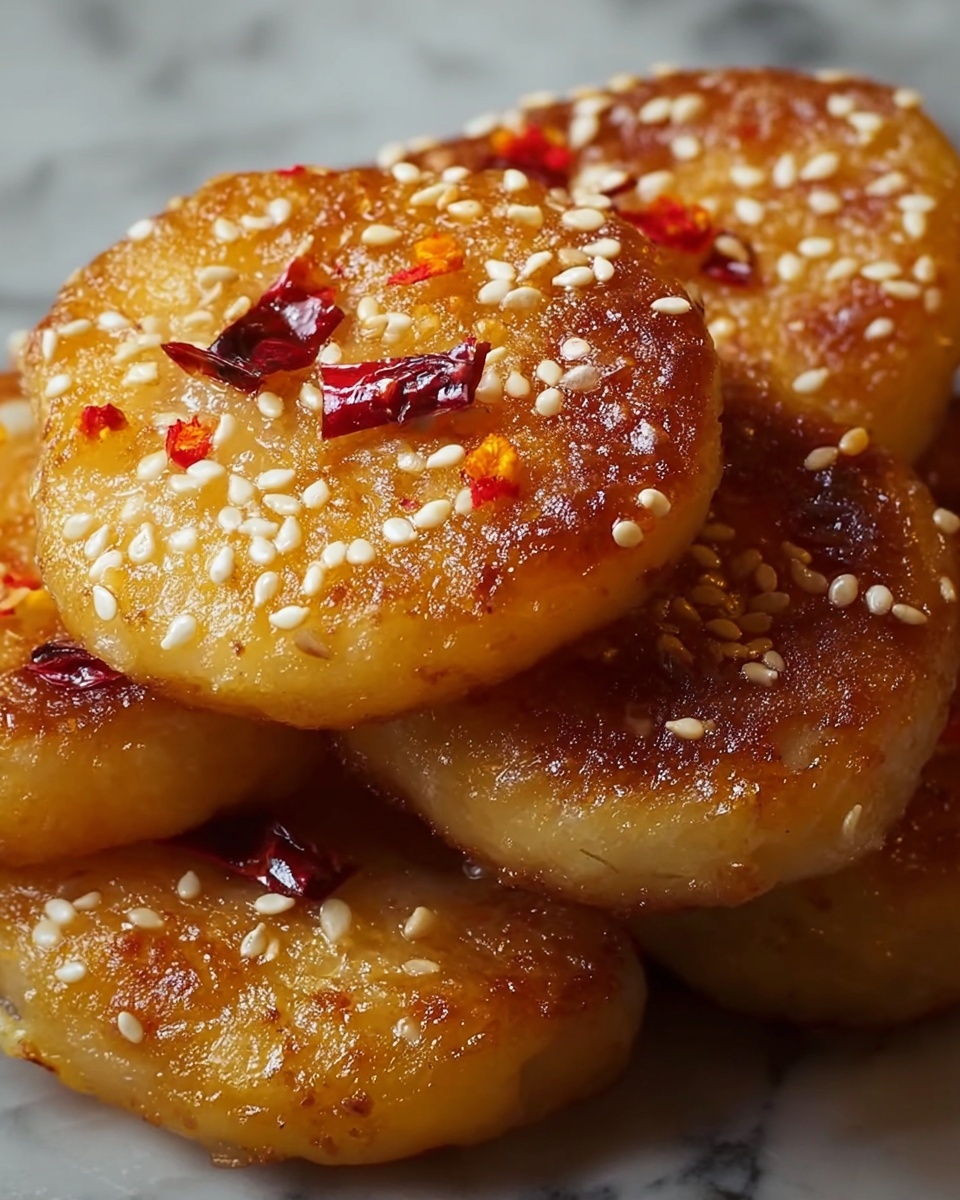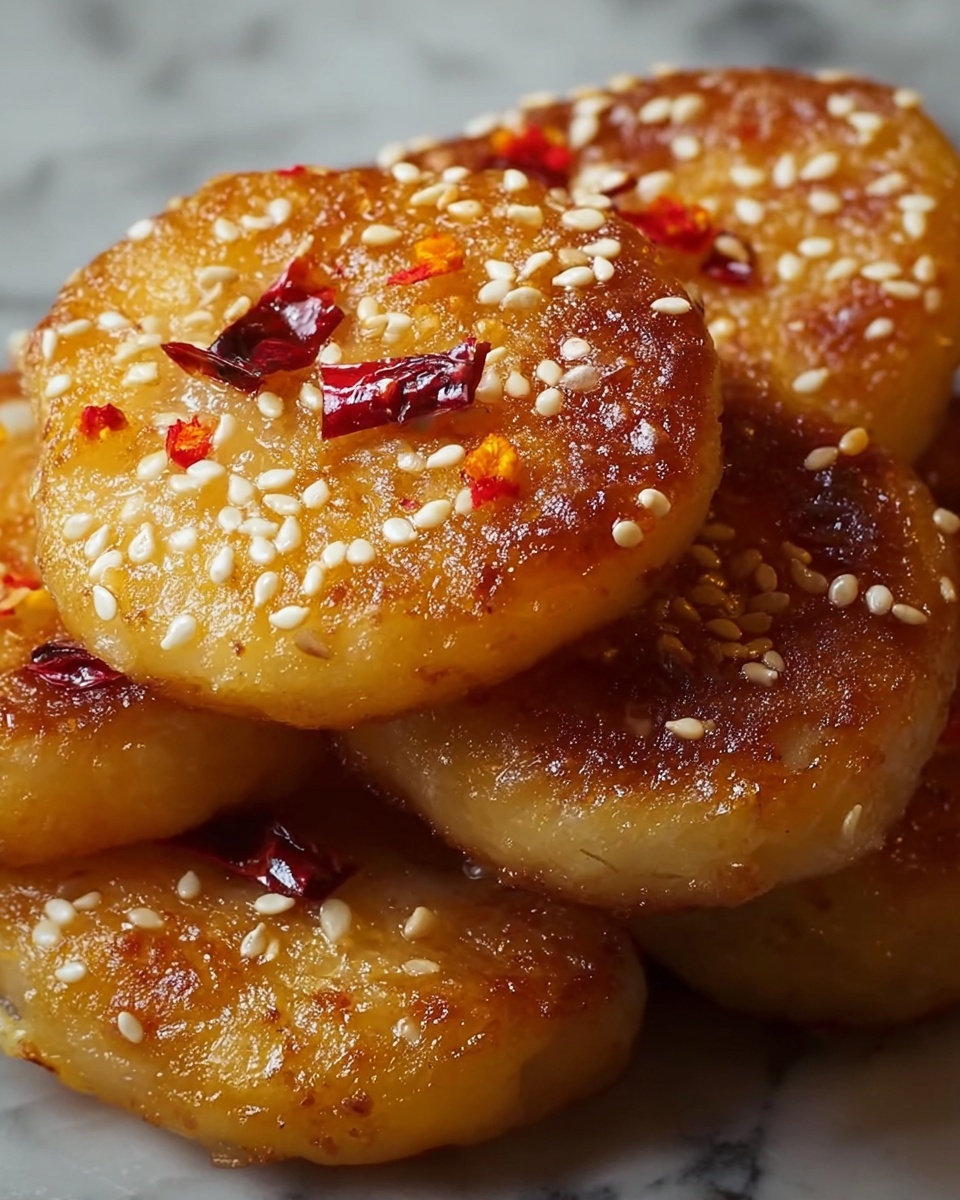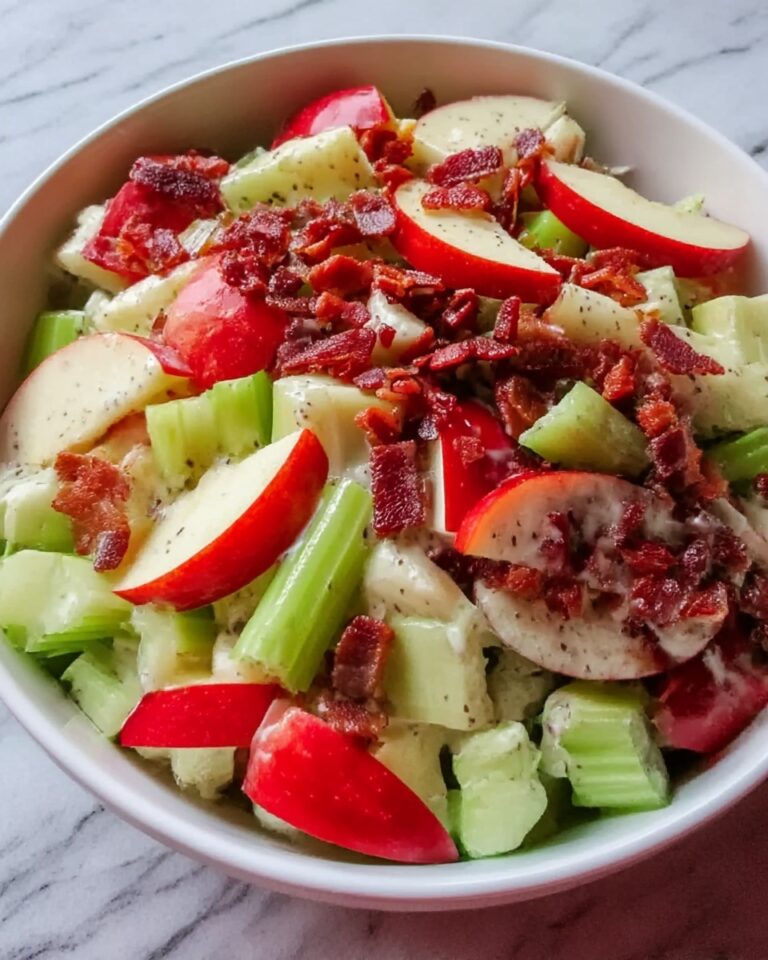If you’re on the hunt for a delightful snack that brings a bit of the Philippines right to your kitchen, you’re in for a real treat with Binangkal: Filipino Sesame Dough Balls Recipe. These golden, crispy-yet-soft dough balls coated generously with sesame seeds are perfect for dipping into your favorite hot beverage or sharing with friends and family. Every bite offers a lovely contrast of nutty crunch and tender dough, making Binangkal a snack that’s as comforting as it is addictive. Whether you grew up with this tasty gem or you’re discovering it for the first time, this recipe will have you hooked in no time.

Ingredients You’ll Need
What makes Binangkal so irresistible are the simple, everyday ingredients that come together beautifully to create this snack’s unique texture and flavor. Each element—from the flour to the sesame seeds—plays a crucial role in achieving that perfect balance of fluffy inside and crunchy outside.
- All-purpose flour (2 cups): The sturdy base that gives Binangkal its structure and tenderness.
- Granulated sugar (1/2 cup): Adds just the right touch of sweetness without overpowering.
- Baking powder (2 teaspoons): Helps the dough rise and become airy.
- Salt (1/4 teaspoon): Enhances all the flavors so the sweet and nutty notes really shine.
- Large eggs (2): Bind the dough together and add richness.
- Evaporated milk (1/4 cup): Offers a creamy depth and moisture to keep things soft inside.
- Unsalted butter, melted (2 tablespoons): Contributes a subtle richness and tender crumb.
- Vanilla extract (1 teaspoon): Lends a gentle vanilla aroma that complements the sesame beautifully.
- Sesame seeds (1/2 cup): The signature crunchy coating that gives Binangkal its distinctive flavor and texture.
- Vegetable oil (for frying): Ensures that golden, crisp finish without heaviness.
How to Make Binangkal: Filipino Sesame Dough Balls Recipe
Step 1: Mix the Dry Ingredients
Start by whisking together the flour, sugar, baking powder, and salt in a large bowl. This ensures all the dry ingredients are evenly distributed, which helps your dough rise uniformly and keeps that sweet-salty flavor consistent throughout each bite.
Step 2: Combine the Wet Ingredients
In a separate bowl, beat the eggs until smooth. Add the evaporated milk, melted butter, and vanilla extract to the eggs, mixing well. This wet mixture introduces moisture and richness, making sure your Binangkal dough won’t be dry or crumbly.
Step 3: Form the Dough
Pour the wet ingredients into the dry mix and stir until you get a soft, slightly sticky dough. It should hold together well but still feel tender to the touch. This is the foundation for those light, fluffy dough balls that are the heart of Binangkal.
Step 4: Shape and Coat the Dough Balls
Scoop out tablespoon-sized portions of dough and gently roll them into smooth, round balls. Then, roll each ball in sesame seeds until thoroughly coated. This sticky shell of sesame seeds will toast up delightfully when fried, adding that signature nutty crunch.
Step 5: Fry Until Golden
Heat about 2 inches of vegetable oil in a deep pan to 325°F (165°C). Carefully drop a few dough balls into the hot oil, making sure not to crowd the pan. Fry for 5 to 7 minutes, turning occasionally so they brown evenly. They’re done when a gorgeous golden color forms on all sides and the dough balls are cooked through.
Step 6: Drain and Cool
Use a slotted spoon to transfer your Binangkal onto paper towels to drain excess oil. Let them cool just slightly—they’re best enjoyed warm but not too hot. The aroma of warm sesame and vanilla will tempt you to dig right in.
How to Serve Binangkal: Filipino Sesame Dough Balls Recipe

Garnishes
Binangkal is delicious all on its own, but sometimes a touch of extra garnish can elevate the experience. Try sprinkling a few crushed toasted sesame seeds or a light dusting of powdered sugar to bring out sweetness and add a pretty finishing touch.
Side Dishes
This snack pairs wonderfully with hot drinks like coffee, hot chocolate, or even traditional Filipino tsokolate—thick, rich hot chocolate made from tablea. The warmth and slight bitterness of the drinks complement the sweet, nutty flavors in Binangkal beautifully.
Creative Ways to Present
For a fun twist, serve your Binangkal in small bamboo baskets lined with colorful napkins or on a pretty platter with a dipping station of honey, condensed milk, or even a dark chocolate sauce. It’s a great way to turn this humble snack into a charming centerpiece for gatherings.
Make Ahead and Storage
Storing Leftovers
If you have any leftovers, store them in an airtight container at room temperature for up to two days. They’ll stay crispy on the outside and soft inside if kept away from moisture. To prevent sogginess, avoid refrigerating them.
Freezing
You can freeze uncoated dough balls before frying. Place them on a tray lined with parchment paper, freeze until solid, then transfer to a freezer-safe container for up to one month. When you’re ready, fry them straight from the freezer, adding a minute or two to the cooking time.
Reheating
To revive the crunch in leftover Binangkal, reheat in a preheated oven at 350°F (175°C) for about 5 to 7 minutes. Avoid microwaving as it can make them soggy. This method restores their crisp texture like they’re freshly fried.
FAQs
Can I use regular milk instead of evaporated milk?
Absolutely! Regular milk works fine in this recipe and will still yield delicious Binangkal. Evaporated milk just adds a slightly richer flavor and creamier texture, but the difference is subtle.
What if I don’t have sesame seeds?
Sesame seeds are key to that distinctive crunch and flavor, but if you’re out, you can lightly coat the dough balls with finely chopped nuts or even poppy seeds. It won’t be quite the same, but still tasty!
Is it okay to bake Binangkal instead of frying?
Baking can be a healthier alternative, but it won’t give you that same golden crisp that frying does. If you want to bake, try rolling them in sesame seeds and baking at 375°F (190°C) for about 15 minutes, but keep an eye on them since they might turn out a little drier.
How can I tell when Binangkal is fully cooked inside?
The golden brown color is a great visual cue, but you can also gently press one with a slotted spoon; it should feel firm yet springy. Overcooking can cause dryness, so stick within the recommended 5 to 7 minutes frying time.
Can I make Binangkal gluten-free?
Definitely! Substitute the all-purpose flour for a gluten-free blend suitable for frying. The texture will be a bit different, but your Binangkal will still be delicious and safe for gluten-sensitive friends.
Final Thoughts
Making Binangkal: Filipino Sesame Dough Balls Recipe at home is like bringing a little piece of Filipino tradition into your kitchen. These crispy, nutty, and slightly sweet treats are perfect for sharing or savoring on your own with a warm drink. Trust me, once you try making Binangkal yourself, it will quickly become one of your favorite go-to snacks for cozy afternoons or festive occasions alike. Don’t wait—grab your ingredients and get frying!
Print
Binangkal: Filipino Sesame Dough Balls Recipe
- Prep Time: 15 minutes
- Cook Time: 20 minutes
- Total Time: 35 minutes
- Yield: 20 pieces
- Category: Snack
- Method: Frying
- Cuisine: Filipino
- Diet: Vegetarian
Description
Binangkal is a traditional Filipino snack featuring crispy sesame-coated dough balls that are deep-fried to golden perfection. These bite-sized treats have a slightly sweet flavor with a delightful crunch from the sesame seeds, making them perfect for pairing with coffee or hot chocolate.
Ingredients
Dry Ingredients
- 2 cups all-purpose flour
- 1/2 cup granulated sugar
- 2 teaspoons baking powder
- 1/4 teaspoon salt
Wet Ingredients
- 2 large eggs
- 1/4 cup evaporated milk
- 2 tablespoons unsalted butter, melted
- 1 teaspoon vanilla extract
Coating and Frying
- 1/2 cup sesame seeds
- Vegetable oil, for frying
Instructions
- Prepare the dry mixture: In a large bowl, whisk together the all-purpose flour, granulated sugar, baking powder, and salt until evenly combined.
- Mix the wet ingredients: In a separate bowl, beat the eggs thoroughly, then add the evaporated milk, melted unsalted butter, and vanilla extract. Mix well to combine.
- Combine wet and dry ingredients: Pour the wet mixture into the dry ingredients and stir gently until a soft, slightly sticky dough forms, ensuring all ingredients are well incorporated.
- Shape the dough balls: Scoop tablespoon-sized portions of dough and roll them into smooth balls with your hands, shaping them uniformly for even cooking.
- Coat with sesame seeds: Roll each dough ball in sesame seeds, pressing gently so the seeds stick evenly over the surface.
- Heat the oil: In a deep pan or pot, pour about 2 inches of vegetable oil and heat over medium heat to 325°F (165°C), maintaining a consistent temperature for optimal frying.
- Deep-fry the binangkal: Carefully lower a few sesame-coated dough balls into the hot oil, avoiding overcrowding. Fry for 5 to 7 minutes, turning occasionally, until the binangkal are golden brown and cooked through.
- Drain and cool: Remove the fried dough balls using a slotted spoon and place them on paper towels to absorb excess oil. Allow to cool slightly before serving.
Notes
- Maintain consistent oil temperature at 325°F to ensure even cooking and prevent burning.
- If evaporated milk is unavailable, substitute with regular milk.
- Binangkal is best enjoyed warm alongside coffee or hot chocolate for an authentic experience.








